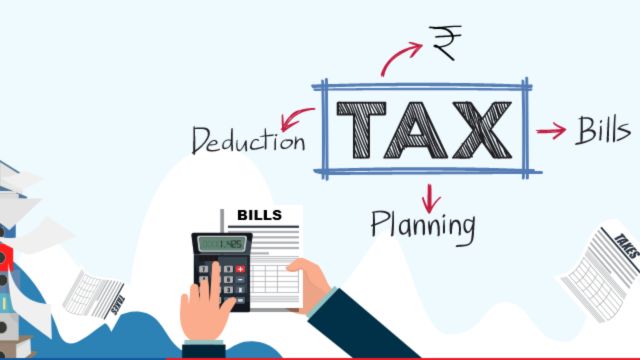Maximizing tax deductions is an essential part of financial planning. In India, the Income Tax Act provides several provisions for reducing taxable income through investments in specific schemes. This guide explains how to claim income tax deductions under the National Pension System (NPS), Public Provident Fund (PPF), and other eligible schemes.
1. National Pension System (NPS) Tax Deductions
The NPS is a government-regulated retirement savings scheme that offers multiple tax benefits under different sections of the Income Tax Act.
Section 80CCD(1): Employee/Self-Contribution
- Eligibility: Available to both salaried and self-employed individuals.
- Deduction Limit:
- Salaried: Up to 10% of salary (Basic + Dearness Allowance).
- Self-Employed: Up to 20% of gross total income.
- Overall Cap: The total deduction under Section 80CCE (including Sections 80C, 80CCC, and 80CCD(1)) is limited to ₹1.5 lakh.
Section 80CCD(1B): Additional Self-Contribution
- Deduction: An additional ₹50,000 over and above the ₹1.5 lakh limit under Section 80C.
- Applicability: Available to all NPS subscribers.
- Benefit: The total deduction potential under NPS can go up to ₹2 lakh (₹1.5 lakh under 80CCD(1) + ₹50,000 under 80CCD(1B)).
Section 80CCD(2): Employer’s Contribution
- Eligibility: Only for salaried individuals.
- Deduction Limit:
- Private Sector: Up to 10% of salary (Basic + DA).
- Government Sector: Up to 14% of salary.
- Note: This deduction is over and above the ₹1.5 lakh limit under Section 80C.
How to Claim NPS Deductions:
- Open an NPS Account:
- Visit the National Pension System Trust (NPS Trust) or the Protean eGov NPS Portal.
- Make Contributions:
- Regularly contribute to your NPS Tier-I account.
- Maintain Records:
- Keep transaction statements and contribution receipts.
- File Income Tax Returns (ITR):
- Enter the eligible deduction amounts under the respective sections in your ITR form.
2. Public Provident Fund (PPF) Tax Deductions

PPF is a long-term savings scheme with a fixed interest rate and tax-free returns.
- Section: 80C of the Income Tax Act.
- Deduction Limit: Up to ₹1.5 lakh per financial year.
- Interest: Currently at 7.6% per annum (tax-free).
- Lock-in Period: 15 years.
How to Claim PPF Deductions:
- Open a PPF Account:
- You can open a PPF account at designated banks or post offices.
- Make Contributions:
- Deposit a minimum of ₹500 and a maximum of ₹1.5 lakh annually.
- Maintain Passbook/Statements:
- Keep records of all contributions for tax filing purposes.
- File Income Tax Returns:
- Report the invested amount under Section 80C during ITR filing.
3. Other Schemes Eligible Under Section 80C

In addition to NPS and PPF, several other investments and expenses qualify for deductions under Section 80C:
- Employee Provident Fund (EPF): Employee contributions to EPF are eligible for deductions.
- Life Insurance Premiums: Premiums paid for self, spouse, or children.
- Equity-Linked Savings Scheme (ELSS): Mutual funds with a 3-year lock-in period.
- National Savings Certificate (NSC): A fixed-income investment with a 5-year tenure.
- Tuition Fees: Fees paid for children’s education (up to two children).
- Home Loan Principal Repayment: The principal component of home loan EMIs.
Note: The combined deduction limit under Section 80C is ₹1.5 lakh per financial year.
4. General Steps to Claim Tax Deductions
- Collect Investment Proofs:
- Gather receipts, statements, and certificates for all eligible investments.
- Submit to Employer:
- Provide investment proofs to your employer to include them in Form 16.
- File Income Tax Return:
- Enter all eligible deductions in the respective sections of the ITR form.
- Retain Documents:
- Keep investment records and receipts for at least 6 years for future reference.
5. Useful Links for Registration and Information:
- National Pension System (NPS):
NPS Trust – Official Portal - PPF Account:
India Post PPF Information - Income Tax E-Filing:
Income Tax India E-Filing Portal - NSC & Other Savings Schemes:
India Post – National Savings Schemes
By strategically investing in schemes like NPS, PPF, and other Section 80C eligible schemes, taxpayers can effectively reduce their taxable income and secure their financial future. Ensure that you maintain proper documentation of all investments to seamlessly claim deductions during tax filing.
Discover valuable insights on Indian government schemes, tax-saving opportunities, and welfare programs at Digital India MIB. Empower your financial journey with trusted resources and expert advice. Join us today!
What Is The Maximum Contribution Limit For NPS?
The maximum contribution limit for NPS is ₹1.5 lakh under Section 80CCD(1), with an additional ₹50,000 under Section 80CCD(1B) for self-contributions, excluding employer contributions.
Can NPS Be Withdrawn Before 60 Years?
Yes, NPS allows partial withdrawals after 3 years for specific purposes such as education, medical treatment, or purchasing a house. However, full withdrawal is allowed only after 60 years.
How Are PPF Interest Rates Determined?
PPF interest rates are determined by the Government of India and are revised quarterly. The rates are fixed, and the interest earned is tax-free.
Is There A Lock-In Period For PPF?
Yes, PPF has a 15-year lock-in period. However, partial withdrawals are allowed after the 7th year, and the account can be extended in blocks of 5 years.
Can I Claim Both NPS And PPF Deductions?
Yes, you can claim tax deductions for both NPS and PPF contributions under Sections 80C and 80CCD, as they fall under different sections and have separate deduction limits.
What Happens If NPS Contributions Are Not Made Regularly?
If NPS contributions are not made regularly, the account becomes inactive. However, you can reactivate it by making a minimum contribution and following the reactivation process on the NPS portal.













